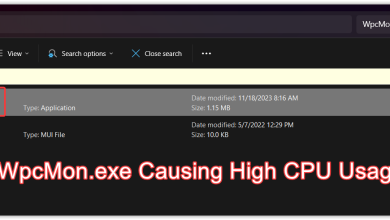Fix: Services and Controller App Random High CPU Usage
The Services and Controller app may show High CPU usage due to conflicting applications (like Sequrazo or SAntivirus). Moreover, the wrong configuration of Indexing Options or Display Settings of your system may also cause the error at hand.
The user encounters the issue when he notices (due to random sluggishness and lagging of his system) a high CPU which starts from 30-40% and increases the CPU usage to 100%, combined with other processes by Services and Controller app in the Task Manager of his system.

You may fix the Services and Controller app high CPU by trying the solutions below but before that, check if your system has not installed more than one security product (like two antiviruses). If so, then remove one of the applications (that is not essential). Also, check if performing a cold restart of your system sorts out the problem.
Solution 1: Use the Task Manager of Your System
The issue could be a result of a temporary glitch of the system processes, which can be cleared by force closing the problematic process using the Task Manager of your system.
- Right-click on the Windows button (to launch the power user menu) and choose Task Manager.
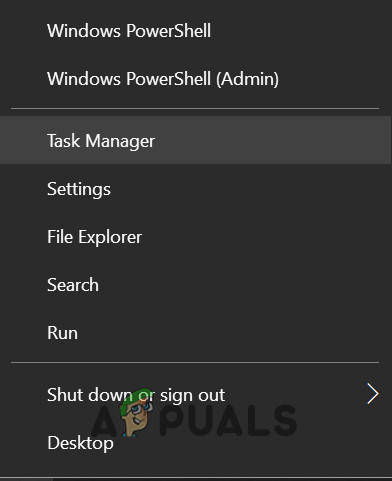
Open the Task Manager from the Quick Access Menu - Then steer to the Services tab and right-click on the DPS (Diagnostic Policy Service).
- Now select Stop (ignore any warnings, if received) and then check if the high CPU issue is resolved.
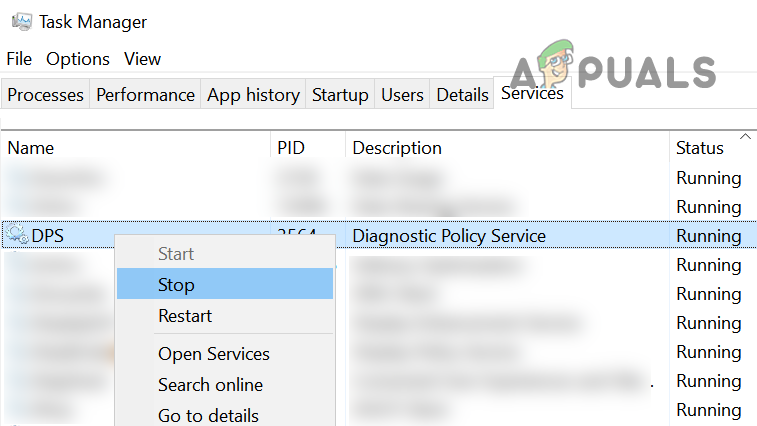
Stop the DPS Service - If not, navigate to the Processes tab of the Task Manager.
- Now, right-click on the Services and Controller App and select Go to Details.
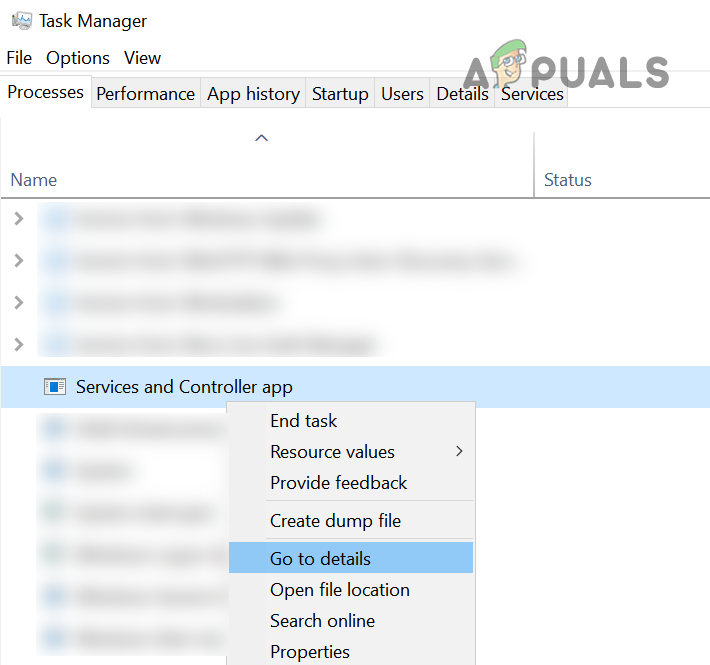
Go to Details of the Services and Controller App - Then right-click on Services.exe and choose End Process Tree.
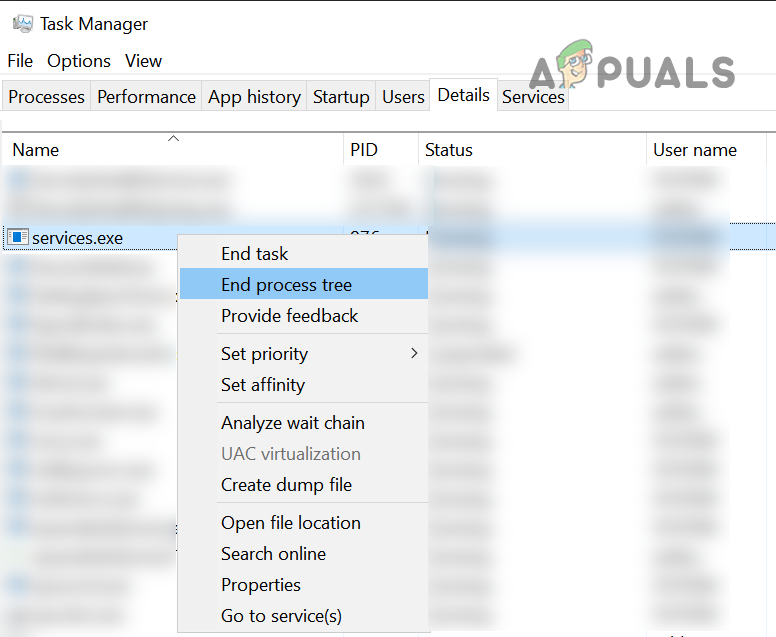
End Process Tree of Services.Exe - Now let the system be normalized (or reboot) and check if the high CPU issue is resolved.
Solution 2: Update the Windows and Drivers of Your PC to the Latest Build
The issue may be a result of a Windows bug and can be cleared by updating the Windows and drivers of your system (as Microsoft is continuously hunting to clear out the Windows bugs and the patches are propagated through the Windows update channel).
- Update the system’s Windows and drivers to the latest build.
- After completion of updates, check if the services app issue is resolved.
Solution 3: Try a Different Network
You may encounter the issue at hand if the network you are using to access the internet is not properly configured or compromised/infected (for example, school or university internet). In this case, trying another network to connect to the internet may solve the problem.
- Disconnect your system from the current network (or unplug its cable, if using the ethernet connection) and power-off your system.
- Now power on the system and connect it to another network (if no other network is possible, then you may try the hotspot of your mobile phone).
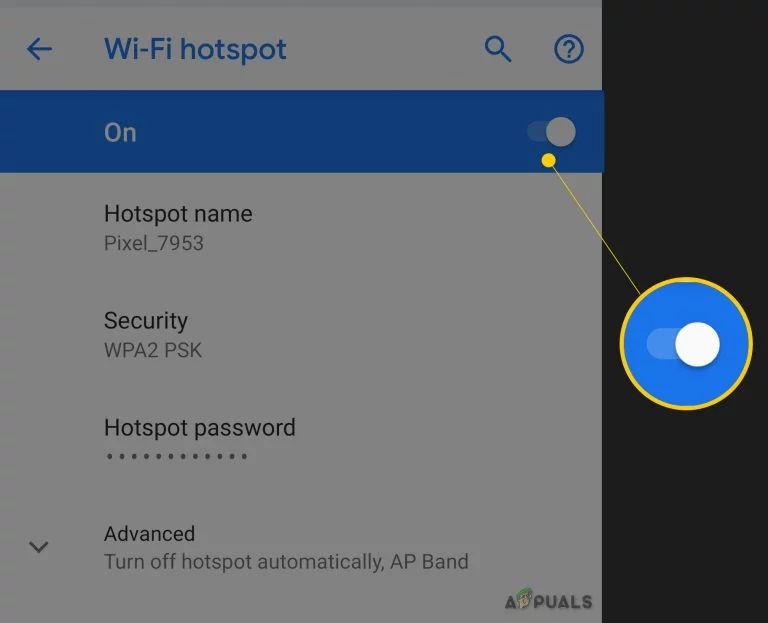
Enable Hotspot of Your Phone - Then check if the high CPU usage issue is resolved. If so, then try to sort out the issue with the network (if possible) that is causing the issue.
Solution 4: Remove/Disable the Conflicting Applications
The high CPU usage may be caused by an application that conflicts with the other OS modules/applications. In this context, removing/disabling the conflicting applications may solve the problem.
- Boot your system into safe mode and check if the issue appears.
- If not, clean boot your system and check if the issue appears.
- If not, then enable all the applications/processes one by one that was disabled during the clean boot process to find out the culprit.
- Once the problematic application is found, remove it or disable it.
You can also use Autoruns or Process Explorer to find out the problematic application. Following applications are reported by users to create the issue.
- Sequrazo or SAntivirus (if it is creating the issue, then make sure to perform a malware scan of your system, discussed in solution 7)
- AURA Led or LightingService.exe
- LenovoVantageService
- MySQL Client
- MySQL Notifier
Some users reported that launching a particular browser (for example, Chrome) triggered high CPU usage. If that is the case with you, then check if resetting or reinstalling (after the browser’s complete removal) the browser sorts out the issue.
Solution 5: Edit the Indexing Options of Your System
Your system may show high CPU usage by Services if Microsoft Outlook is trying to index a large number of emails (e.g., 1,00,000+ emails). In this case, disabling the indexing by Microsoft Outlook may solve the problem.
- Click Windows and type: Control Panel. Then open Control Panel.
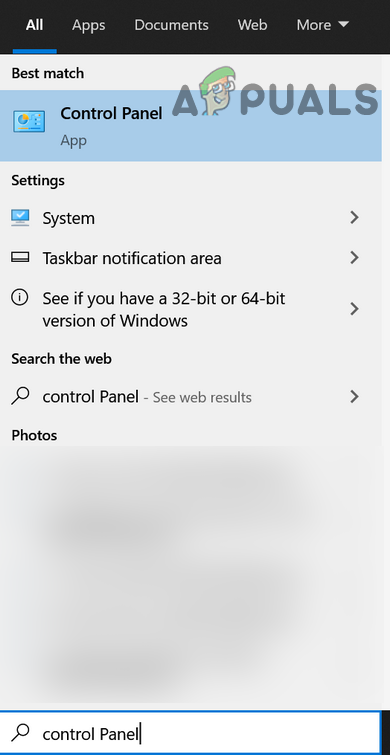
Open Control Panel - Now click on View by and select Large Icon.
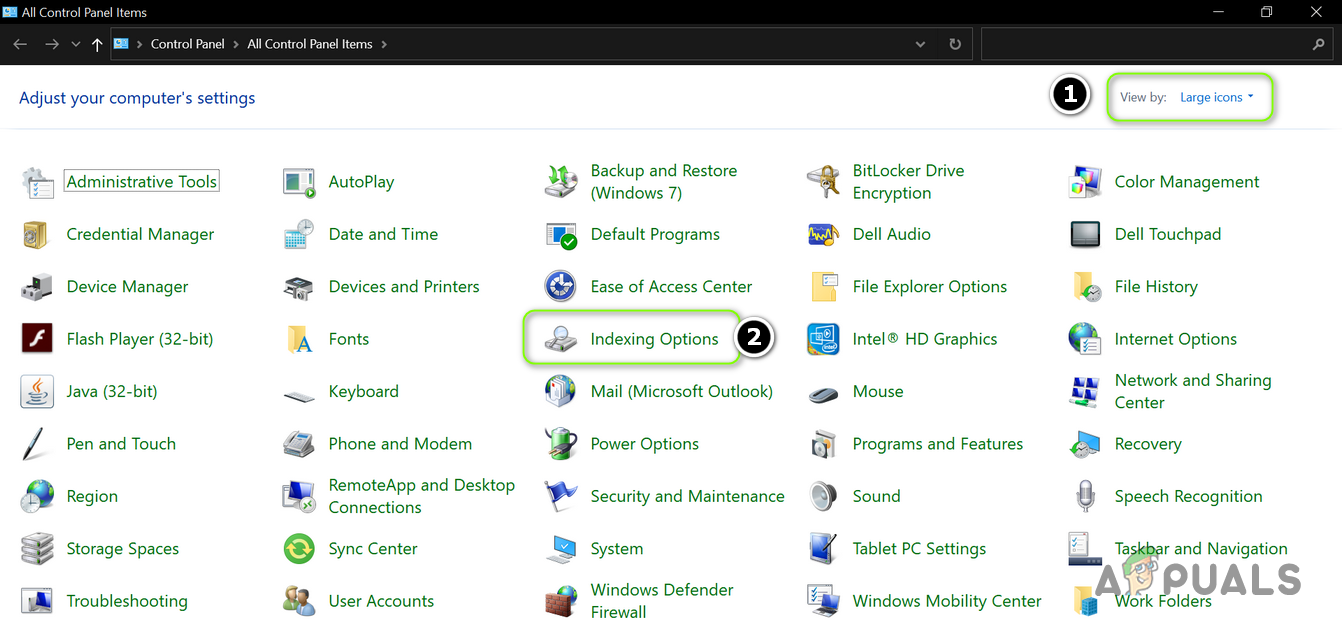
Change View By to Large Icons and Open Index Options - Then open Indexing Options and click on Modify.
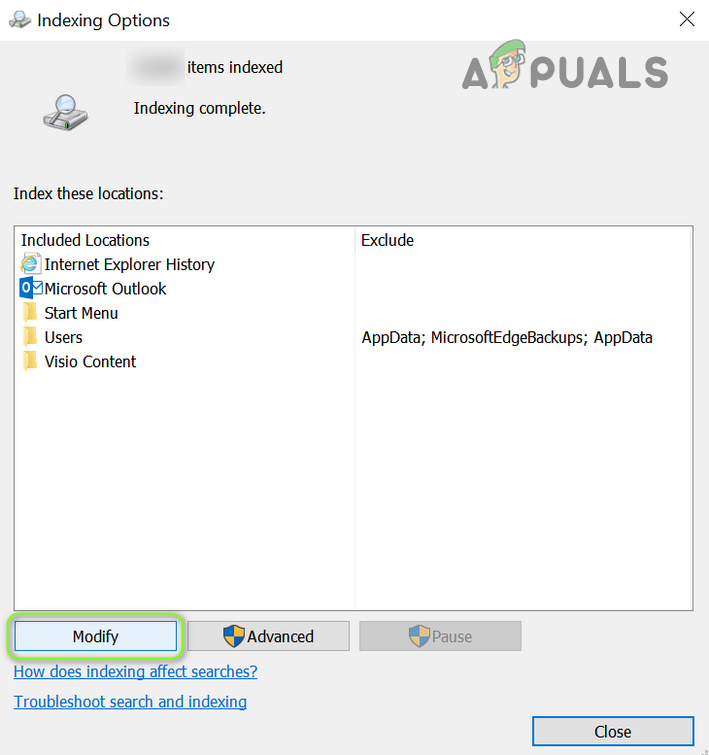
Click on Modify in the Indexing Options - Now uncheck the option of Microsoft Outlook (you may uncheck any other option that is not essential) and apply your changes.

Uncheck Microsoft Outlook in the Indexed Locations - Then reboot your PC and check if the high CPU usage is resolved.
Solution 6: Edit the Windows Display Settings
The Services and Controller App may show high CPU usage if the Windows Display settings (especially, the background, if it refreshes every minute) are not configured properly. In this context, editing the relevant Display Settings of your system may solve the problem.
- Hit the Windows key and type: Background. Then, in the results, select Background Image Settings.

Open Background Image Settings - Now, check if the Background is set to Slideshow. If so, then expand the dropdown of Change Picture Every to 6 hours or something higher (but not 1 minute).

Change Picture Every to 6 Hours - Then reboot your PC and check if the CPU usage is back to normal.
- If not, open the Background Image Setting (step 1) and expand the dropdown of Background.
- Now select Solid Color (or Picture) but make sure, the setting is not set to Slideshow. Also, make sure none of these settings are automatically managed by Windows.
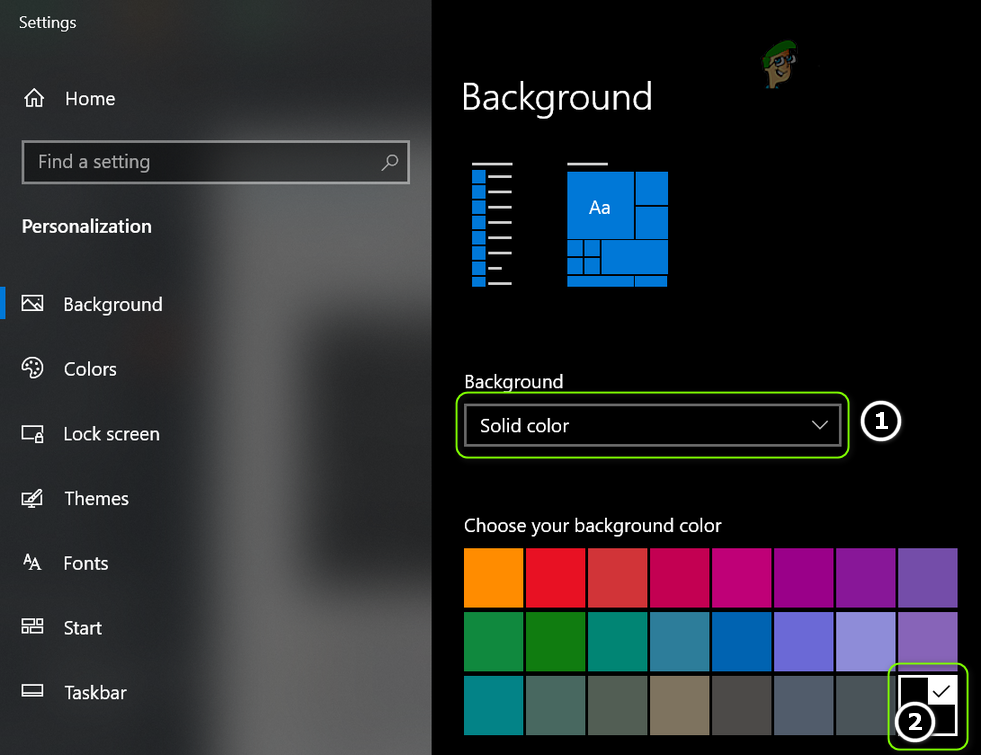
Change Background to Solid Color - Then select a dark color (preferably, black) and reboot your PC to check if the system is clear of the high CPU usage.
Solution 7: Revert the Display Language to the Default
Your system may show high CPU usage by Services and Controller app if you have switched the Display Language of your system (from the one in which Windows was installed) as it may call some translations to take place at the back-end which can hog up the CPU. In this case, reverting the Display Language to the default language (in which Windows was installed) may solve the problem.
- Click Start, select Settings, and open Time & Language.
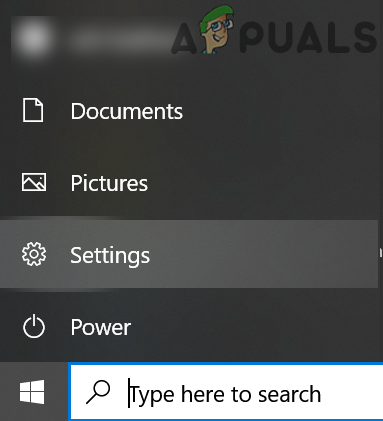
Open the Windows Settings - Now, in the left pane, steer to the Language tab and expand the dropdown of Windows Display Language.

Change Windows Display Language - Then, select the default language in which Windows was installed. If you have removed the language, then use the Add a Language option to add the default language back.
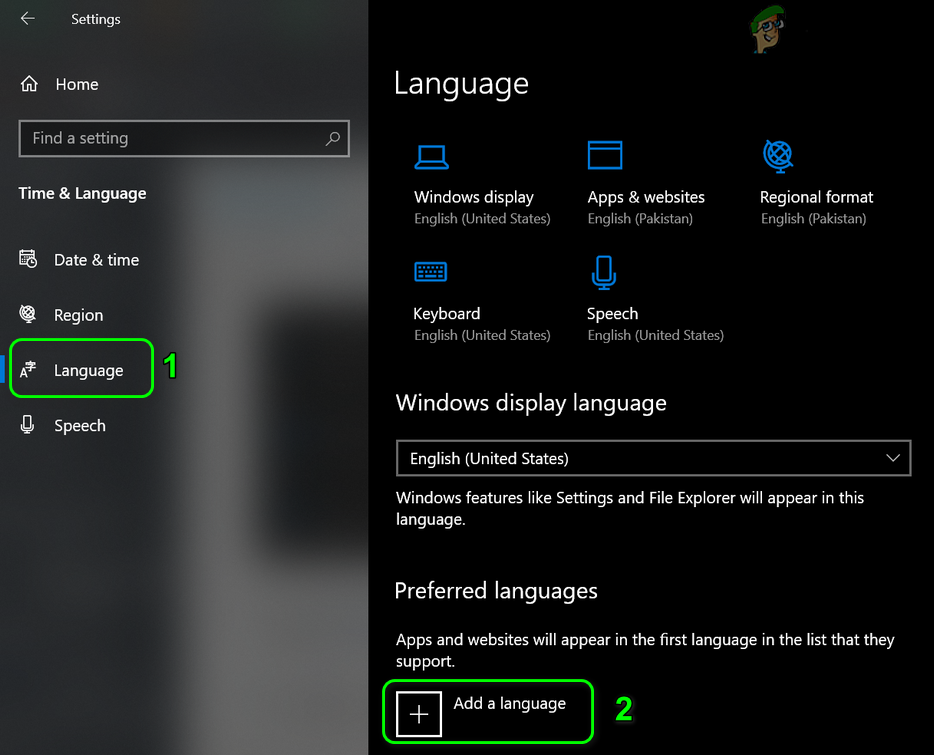
Select Add a Language in the Language Settings - After setting the Display Language to the default, reboot your PC and check if the issue is resolved. If you are desperate to use Windows in your preferred language, then you may clean install the Windows with that language as default.
Solution 8: Perform a Malware Scan
The high CPU usage by the Services and Controller app could be triggered by malware on your system. In this scenario, performing a malware scan of your system may solve the problem. You may use any tool of your liking (e.g., Kaspersky); we will discuss the process for the Malwarebytes application. Also, it will be a good idea to make sure that the antivirus of your system is not disabled/turned off (McAfee is reported to be disabled by the malware, which triggers the issue).
- Perform a malware scan by using Malwarebytes.
- After clearing out all the detections by Malwarebytes, check if the high CPU issue is resolved.
If you are encountering the issue after launching a particular browser (like Chrome), then check if any of its extensions is not causing the issue.
Solution 9: Perform an SFC Scan
You may encounter the issue at hand if the essential system files are corrupt or missing. In this context, performing an SFC scan (which may bring back the essential files) may sort out the problem.
- Perform an SFC scan of your PC. But keep in mind that this may take some time to complete, so, try it when you can spare your PC for some time.

Perform an SFC Scan - After completion of the scan, check if the high CPU issue is resolved.
Solution 10: Edit the Properties of the System Services
Your system may show high CPU usage if any of the essential system services are not properly configured or in an error state. In this case, editing the properties of the relevant system services may solve the problem. But keep in mind that disabling or changing the startup type of service may have its repercussions.
Hit the Windows key and in the search, type: Services. Now, in the right pane, click on Run as Administrator. Now check if trying the following edits solve the problem.
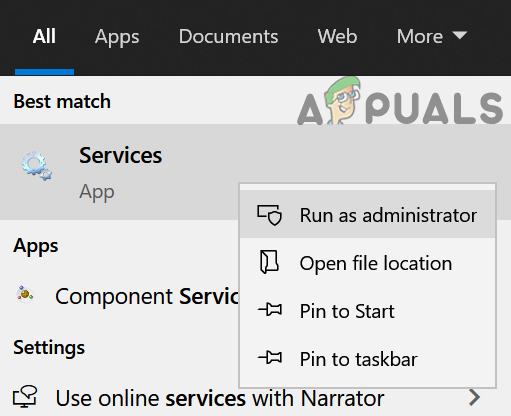
Restart the Windows Management Instrumentation (WMI) Service
- In the Services window, find the Windows Management Instrumentation service and right-click on it.
- Now, in the menu shown, click on Restart and check if the high CPU issue is resolved.
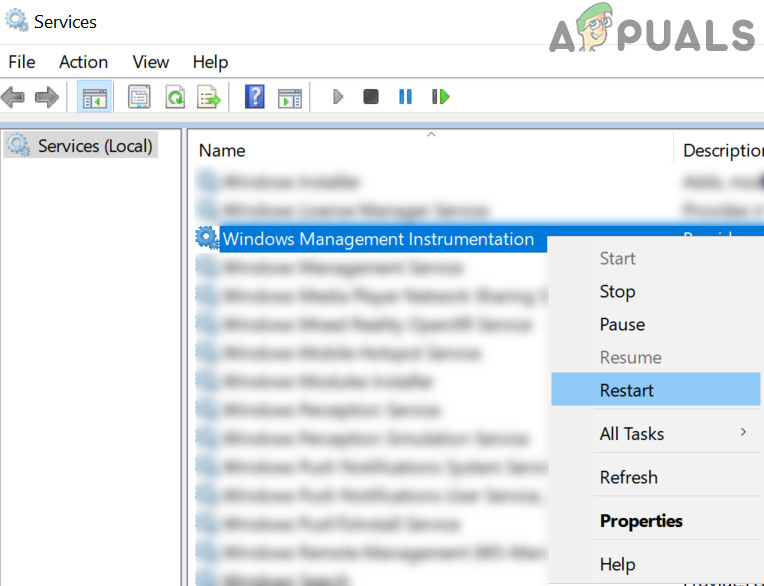
Restart the Windows Management Instrumentation Service
Disable the Diagnostic Policy (DPS) and Other Related Services
- In the Service window, find the Diagnostic Policy Service (DPS) and right-click on it.

Open Properties of Diagnostic Policy Service - Now, in the menu shown, click on Properties and expand the dropdown of the Startup type.
- Then select Disabled and click on the Stop button to stop the service.
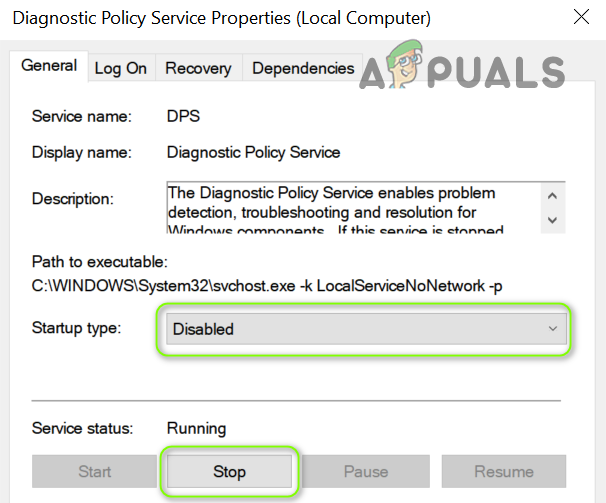
Disable Diagnostic Policy Service and Stop it - Now apply your changes and reboot your PC to check if the system is clear of the high CPU usage.
- If not, then check if disabling the following services (if present) solves the problem:
Connected User Experiences and Telemetry Diagnostic Service Host Diagnostic System Host HomeGroupListener HomeGroupProvider

Disable Diagnostic Service Host and Diagnostic System Host - If you are using an ASUS system, then check if disabling the Nahimic Service solves the problem.
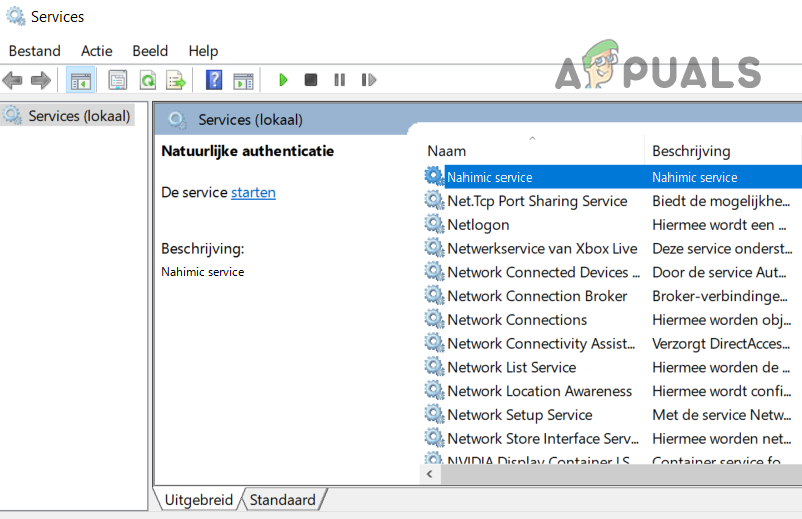
Disable Nahimic Service - If you are using a SQL client, then check if disabling the database service (related to the SQL client) resolves the problem.
If the problem persists, then check if you can perform a system restore. If not, then you try a repair install to resolve the high CPU issue.


